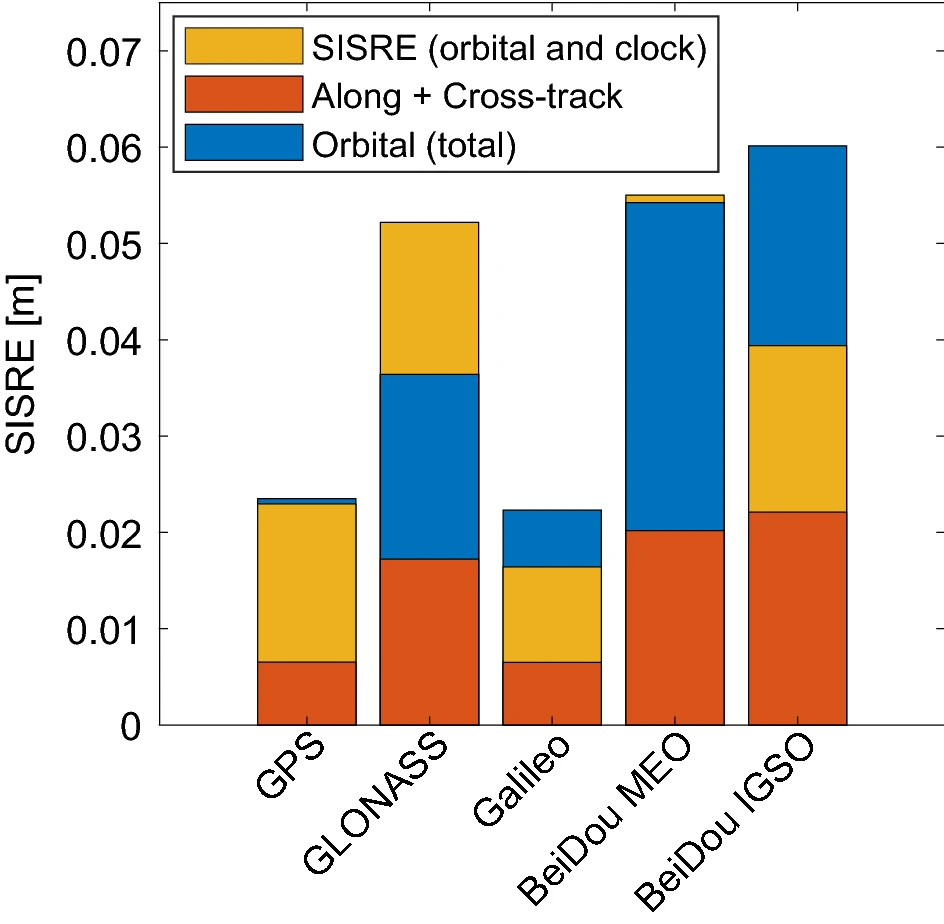
In the recent article published in GPS Solutions, scientists from IGG show how ultra-accurate atomic clocks can correct a total error in satellite positioning and navigation. This was impossible with GPS or GLONASS due to the low accuracy of onboard atomic clocks. The Galileo satellites are equipped with very stable atomic rubidium clocks and hydrogen masers. These clocks are so accurate that they can correct errors in the satellite positions. Although the total error of the signal including position and time should increase, it drops from 2.2 cm to 1.6 cm after using the atomic clocks onboard the Galileo satellites. This result is very surprising because at the stage of development of the satellite systems it was not planned to correct the position with data from atomic clocks. The total error of the Galileo signal is 1.6 cm, which is currently the most accurate of all navigation systems. The same error is 2.3 cm and 5.2 cm, in the case of GPS and GLONASS, respectively. Thus, the European Galileo system already provides the highest signal quality, despite the constellation incompleteness.
Orbit and clock error
Positioning with navigation satellites is based on measuring the difference in the time of sending signal by satellite and the time of receiving this signal. To calculate the receiver position it is, therefore, necessary to know the exact position of the satellite at the time of sending the signal and the time of emission determined by the onboard atomic clock. The error in the clock or the position of the satellite directly affects the position of the GNSS receiver. The so-called SISRE (signal-in-space ranging error) parameter was used to assess how the satellite position error and the clock error translate into the signal error in space. SISRE consists of two parts: a satellite position error (orbit error) and a clock error.
Orbit and clock error
Positioning with navigation satellites is based on measuring the difference in the time of sending signal by satellite and the time of receiving this signal. To calculate the receiver position it is, therefore, necessary to know the exact position of the satellite at the time of sending the signal and the time of emission determined by the onboard atomic clock. The error in the clock or the position of the satellite directly affects the position of the GNSS receiver. The so-called SISRE (signal-in-space ranging error) parameter was used to assess how the satellite position error and the clock error translate into the signal error in space. SISRE consists of two parts: a satellite position error (orbit error) and a clock error.
The total SISRE containing an error of a satellite position and the clock is smaller for Galileo than the SISRE of the position itself. It means that the atomic clock effectively corrects systematic errors in the calculated position. Typically, errors should add up according to Gauss law. In the case of GLONASS, the satellite signal error increases from 3.9 cm (position-only error) to 5.1 cm (position and clock error). However, the onboard clock readings may have a similar value to the satellite position error, only the opposite sign for very accurate clocks. Position and clock are highly correlated in calculating the total effect on the satellite signal. It is the case for the Galileo satellites, where the clock corrects the orbit. The same happens in the Chinese BeiDou IGSO satellites, but the total error remains at 3.9 cm. The results of research conducted by scientists from IGG are quite a surprise and constitute an important step in understanding the way how navigation systems work and how their future can look like.
For more information on this and the evolution of changes in the accuracy of the GPS, GLONASS, Galileo, and BeiDou orbits and clocks, see:
Kazmierski, K., Zajdel, R. Sośnica, K. (2020) Evolution of orbit and clock quality for real-time multi-GNSS solutions. GPS Solut 24, 111 (2020). https://doi.org/10.1007/s10291-020-01026-6
